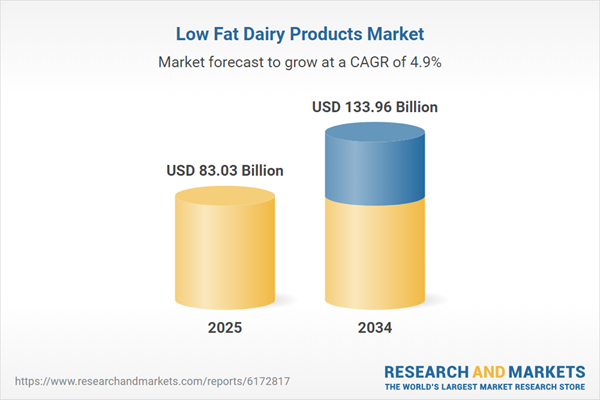Increasing Prevalence of Diseases Like Obesity to Aid the Market Growth of Low Fat Dairy Products
The global market of low fat dairy products is being driven by the increasing prevalence of diseases like obesity across the globe as the consequence of consuming regular milk. In addition, health experts recommend the consumption of low fat dairy products during pregnancy to fulfil the nutritional requirement of calcium, vitamins and minerals, which is crucial for the health of both mother and fetus.Further, the growing emphasis on investment in R&D activities in the dairy industry is boosting new innovations in products and product enhancement, as a result, indirectly aiding the low fat dairy products. Moreover, the rising demand for low fat yogurt and various fat-free products in the food industry is promoting the growth of low fat dairy products industry.
Low Fat Dairy Products: Market Segmentation
Low fat dairy products are referred to products developed from milk but have less fat content. The low fat dairy products include but not limited to cheese, skim milk, yogurt and ice cream. The taste, flavour, and texture of these products is similar to that of whole milk dairy products. These are prepared via centrifugal process which involves the separation of fat from the milk, along with the microbes and pathogens.On the basis of nature, the market is divided into:
- Organic
- Conventional
Based on type, the industry can be segmented into:
- Low Fat Butter
- Low Fat Cheese
- Low Fat Yoghurt
- Low Fat Ice Cream
- Reduced Fat Margarine
- Fat Free Condensed Milk
- Skimmed Milk
- Others
By distribution channel, the industry is segmented into:
- Supermarkets and Hypermarkets
- Convenience Stores
- Dairy Stores
- Online
- Others
The regional markets for the product include:
- North America
- Europe
- Asia-Pacific
- Latin America
- Middle East and Africa
Rising Health Awareness to Aid the Market Growth of Low Fat Dairy Products
The market growth of low fat dairy products is being driven by the rising awareness associated with the health benefits of consuming low-fat dairy products among the mass population. Further, the increasing number of obese population considering a lifestyle shift towards a healthy one, is positively affecting the market growth of low fat dairy products. In addition, the accelerating investment in dairy research and science is fostering product innovations within the low-fat dairy products industry. The ongoing R&D activities are facilitating robust growth in the global market of low-fat dairy products.However, the market growth of low fat dairy products may hamper over the forecast period as preserving the original organoleptic properties like taste, texture, look and smell of low-fat dairy products becomes challenging after the removal of fat and excess sodium.
Key Industry Players in the Global Low fat dairy products Market
The report gives a detailed analysis of the following key players in the global low fat dairy products market, covering their competitive landscape, capacity, and latest developments like mergers, acquisitions, and investments, expansions of capacity, and plant turnarounds:- Arla Foods amba
- Danone S.A.
- Fonterra Co-Operative Group Limited
- Gujarat Cooperative Milk Marketing Federation Ltd.
- Others
Table of Contents
Companies Mentioned
The key companies featured in this Low Fat Dairy Products market report include:- Arla Foods amba
- Danone S.A.
- Fonterra Co-Operative Group Limited
- Gujarat Cooperative Milk Marketing Federation Ltd.
Table Information
| Report Attribute | Details |
|---|---|
| No. of Pages | 165 |
| Published | August 2025 |
| Forecast Period | 2025 - 2034 |
| Estimated Market Value ( USD | $ 83.03 Billion |
| Forecasted Market Value ( USD | $ 133.96 Billion |
| Compound Annual Growth Rate | 4.9% |
| Regions Covered | Global |
| No. of Companies Mentioned | 5 |









